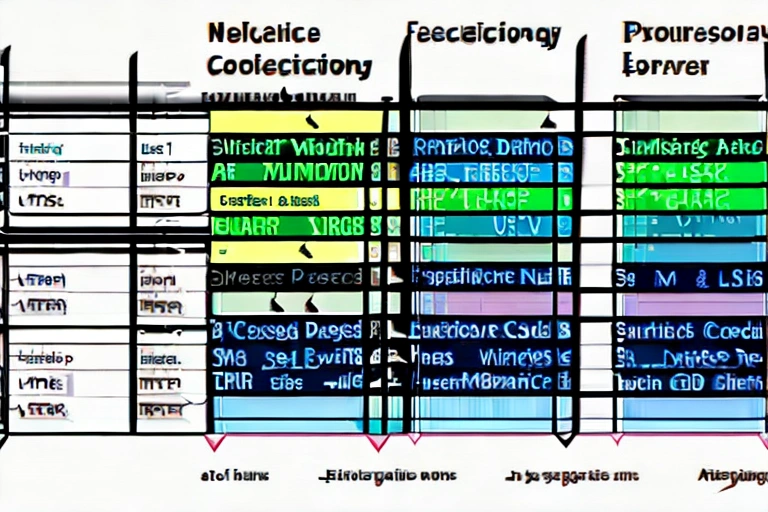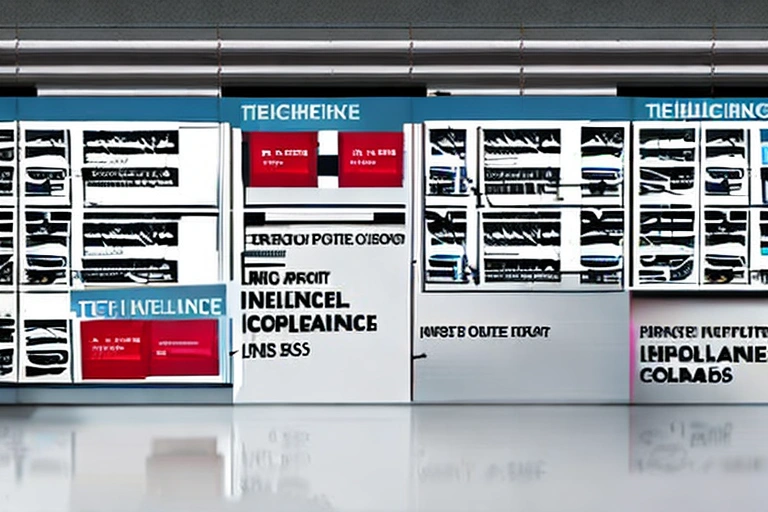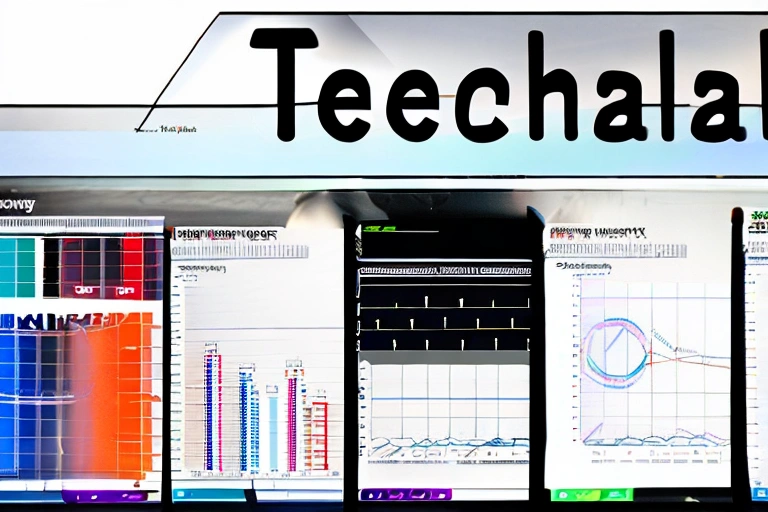Are you interested in learning how to interpret technical intelligence from spy tools and networks? Do you want to unlock the secrets of gathering vital information without leaving a trace? In this blog post, we’ll discuss how to make use of the latest spy tools and networks to gain invaluable intelligence. Keep reading to find out the techniques used by the best spies in the business!
Introduction to Technical Intelligence Collection
The process of collecting technical intelligence from spy tools and networks is an important part of the intelligence community’s arsenal. Technical intelligence can provide critical insights into a target’s capabilities, tactics, and intentions. Spy tools and networks can also be used to gather data on foreign adversaries and their activities.
There are many different types of spy tools that can be used to collect technical intelligence. Some spy tools use automated techniques to passively collect data from targets without intruding upon their privacy or violating their trust. Other spy tools require human interaction with the target in order to gain access to sensitive information. Spy networks can also be used to collect data from remote targets.
Once technical intelligence has been collected, it must be analyzed in order to determine its value. This analysis may involve decoding encrypted communications, analyzing malicious code, or examining related online activity.Technical intelligence may also be useful in developing countermeasures against future threats. By understanding the strengths and vulnerabilities of our adversaries, we can better protect ourselves against future attacks
Types of Technical Intelligence
There are many different types of technical intelligence, and it can be difficult to determine which type of information is most important for a particular investigation.
Some of the most common types of technical intelligence include:
-
Surveillance data: This information can include things like the locations of devices and servers, the types of traffic being sent and received, and the identities of users.
-
Network data: This information can include information about the network infrastructure, such as the addresses and protocols used.
-
Computer data: This information can include logs, files, and other data from computers.
-
Technical intelligence from spy tools and networks: This type of information can include information about the devices and networks that are being monitored.
The Benefits of Using Spy Tools and Networks
There are many benefits to using spy tools and networks to collect technical intelligence. Spy tools can help analysts identify targets, track the movement of adversaries, and gather information on their activities. Spy networks can provide a secure way to collect data from multiple sources, and they can also be used to track the movements of adversaries and their associates. By using these tools and networks, analysts can gain a better understanding of the adversary’s capabilities and intentions.
How to Collect Data through Technology Networks
Understanding Technical Intelligence Gathering Tools
Understanding how to collect data through technology networks can be difficult, but with the right tools and techniques, it can be a very effective way to gather intelligence. Spy tools and networks can be a valuable source of information when used correctly, and understanding how to collect data through them is essential for success.
There are a number of different ways to collect data through technology networks. One common method is to use spy tools to monitor computer activity. Spy tools can be used to capture email, web browsing, and other activity on a target computer. This information can then be used to extract information or track the target’s movements.
Another way to collect data through technology networks is to use network monitoring software. This type of software can be used to track the traffic on a network and extract information from it. This information can be used to track the movements of individuals or to gather intelligence about a target.
Both spy tools and network monitoring software can be very effective ways to collect data through technology networks. However, they both have their own limitations. Spy tools are limited in their ability to capture sensitive information, and network monitoring software can be less accurate than traditional methods.
Understanding these limitations is essential for success when using technology networks to collect data. If the data is not properly protected, it can be easily captured by spy tools or monitored by network monitoring software. It is important to use caution when using technology networks to collect data, and to use the right tools and techniques for the task at
Analyzing Spy Networks to Gain Insight
When investigating a suspect or network, the first step is to gain access to information. Traditional methods for gaining access include human infiltration and undercover operations. However, these can be risky and often require extensive training, creating potential exposure for the investigator.
Another method of data acquisition through technology networks is technical intelligence collection. This involves collecting data from various systems and devices within a network in order to glean key insights that can be used in investigations. Spy tools and networking technologies make this process easier than ever, as they provide a sneak peak into what’s happening inside an organization or individual’s computer system.
This type of intelligence can be useful for several reasons:
- It can reveal unauthorized activity on behalf of the target, such as accessing sensitive files or communicating with suspect individuals.
- It can help investigators identify potential security threats, such as malware or cyber attacks.
- It can provide an overview of the target’s computer networks, which can be helpful in planning infiltration tactics.
- By understanding how a system works, technicians can improve and troubleshoot it accordingly.
- Technical intelligence often contains clues that would go undetected by traditional surveillance methods, making it essential for any investigator looking to gain a competitive edge.
Investigating Online Surveillance Strategies
When conducting investigations into online surveillance, spying tools and networks can be a valuable source of information. Spy tools can provide investigators with remote access to targets’ computer systems, as well as the ability to capture data andcommunications. Networks offer investigators a foothold in compromising targets’ computers and communications.
Regardless of the investigative technique being used, ensuring proper technical intelligence collection is essential for effective investigation. Proper use of spy tools and networks will allow investigators to collect evidence that can be used in court or leading to an arrest.
Utilizing Digital Forensics for Data Analysis
Digital forensic investigators use a variety of tools to collect data from technology networks. These tools can include packet capture tools, host-based intrusion detection/prevention systems, and network sniffers.
Packet capture tools can be used to collect network traffic data. This data can be used to identify malicious activity and determine the source of attacks.
Host-based intrusion detection/prevention systems can be used to identify malicious activity on computers within a technology network. This information can be used to take action, such as blocking access to the network or issuing warnings to users.
Network sniffers can be used to collect data from the network traffic of targeted computers. This data can be used to identify malicious activity and determine the source of attacks. Network sniffers can also be used to collect data from other devices on the network, such as printers and routers.
Digital forensic investigators use a variety of tools to collect data from technology networks. These tools can include packet capture tools, host-based intrusion detection/prevention systems, and network sniffers.
Understanding the Different Technical Capabilities of Spy Tools and Networks
When it comes to understanding the different technical capabilities of spy tools and networks, it is important to understand the different types of data that can be collected. This includes data that can be used for intelligence, such as text, images, and audio files. Spy tools can also be used to collect data on a target’s computer and network activity. This can include information on what websites a target has visited, what files they have opened, and what emails they have sent. Spy tools can also be used to track a target’s movements and activities online. This can include tracking their location, what websites they have visited, and what phone numbers they have called. Spy tools can also be used to collect data on a target’s computer and network activity. This can include information on what websites a target has visited, what files they have opened, and what emails they have sent. Spy tools can also be used to track a target’s movements and activities online. This can include tracking their location, what websites they have visited, and what phone numbers they have called.
When it comes to understanding the different technical capabilities of spy tools and networks, it is important to understand the different types of data that can be collected. This includes data that can be used for intelligence, such as text, images, and audio files. Spy tools can also be used to collect data on a target’s computer and network activity. This can include information on what websites a target has visited, what files they have opened, and what emails they have sent. Spy tools can also be used to track a target’s movements and activities online. This can include tracking their location, what websites they have visited, and what phone numbers they have called.
Interpreting Raw Data into Actionable Insight
Understanding Technical Intelligence
Technical intelligence is the term used to describe any data or information gathered from a spy tool or network. This can include anything from active monitoring of activity on networks to collecting metadata and search logs. Technical intelligence is often valuable for understanding what a target is doing, how they are doing it, and where they are going. Spy tools and networks can also be useful for tracking the movement of targeted entities or identifying new targets.
Understanding technical intelligence can be difficult, but there are some things that you can do to make it easier. First, you need to understand what spy tools and networks are capable of detecting. Spy tools oftentimes have built-in capabilities for conducting surveillance and gathering data, so pay close attention to what they are reporting. Also, be aware of the types of data that are important for understanding a target. For example, network activity logs can provide information about who is talking to whom, what files they are downloading, and where they are located. Metadata can also be valuable for understanding a target’s activities. For example, tracking the IP addresses and browser types used by targets can help you understand their online activity.
Once you have a good understanding of the data that is being collected, you need to start parsing it. This means breaking it down into its individual pieces and understanding what it means. For example, you might look at network activity logs to see who is communicating with whom and what type of traffic is being exchanged. You might also look at metadata to see which websites are being visited and what content is being viewed. Finally, you might use this information to track the movements of targets or identify new targets.
Interpreting technical intelligence is an important part of understanding a target’s activities. By understanding the data that is being collected and how it is being used, you can better track and identify targets.
Analyzing Spy Tool Outputs
When working with spy tools and raw data, analysts must be able to interpret the different outputs in order for any actionable insights to be generated. The most common output from spy tools is a list of targets or assets that were captured or monitored. Other outputs may include logs of activity, technical indicators (such as network packets or connection strings), and search results from geolocation tracking tools. In order to make the best use of these outputs, it is important to understand how they are structured and how they can be used for intelligence analysis.
The first step in understanding spy tool output is understanding the different fields that are included within them. Each field has a specific purpose and can provide useful information when compiled together. Fields that are commonly included in spy tool output are as follows:
Target List: This list contains the names of targets that were captured or monitored by the spy tool. The target list can be helpful when compiling actionable insights from the data, because it will provide a list of specific individuals or entities that may need to be monitored or dealt with.
Capabilities: This field provides information about the capabilities of the spy tool and its ability to capture and monitor data. This field is important to understand when reviewing surveillance footage or logs in order to determine if they were actually captured by the tool.
Data Capture Duration: This field indicates how long the spying activity has been active for. It is useful when trying to determine how long data has been collected and whether any changes or updates to the spy tool have been made recently.
Data Type: This field indicates the type of data that was captured by the spy tool. This field is helpful when trying to determine if any specific data was missed or if the spy tool is only capable of capturing certain types of data.
Activity Log: This field contains information about the activity that was captured by the spy tool. This information can be helpful when trying to determine who was active on the network and what they were doing.
Network Packets: This field contains information about the network packets that were captured by the spy tool. This information can be helpful when trying to determine what was being communicated on the network and who was communicating with whom.
Connection Strings: This field contains information about the connection strings that were captured by the spy tool. This information can be helpful when trying to determine what type of networks or devices were being used to communicate.
Geolocation: This field contains information about the geolocation of the target or asset. This information can be helpful when trying to determine their location and what they were doing at that time.
When reviewing spy tool output, it is important to understand how each field is used and what information it can provide. By understanding the structure of the data, analysts can better understand how to make use of it for their own purposes.
Interpreting Network Activity
When interpreting raw data from spy tools and networks, it is important to understand the capabilities of the tool and the network. This information can be used to help identify targets, track activity, and plan future actions.
The following are some of the most common capabilities of spy tools and networks:
- Logging: Spy tools and networks often collect logs that can be used to track activity and identify targets.
- Data Collection: Spy tools and networks can collect a variety of data, including logs, user activity, and network traffic.
- Network Analysis: Spy tools and networks can be used to analyze network traffic and identify targets.
Applying Findings to Security Strategies
When scrutinizing technical intelligence from spy tools and networks, analysts must first understand the different technical capabilities of those tools. After understanding the toolset’s capabilities, analysts then need to decipher raw data and identify patterns in order to generate actionable insights. Finally, findings should be applied to security strategies in order to protect confidential information or assets.
Preparing Effective Strategies Based on Technical Metrics
In order to effectively collect and interpret technical intelligence, analysts must have a thorough understanding of spy tools and networks. This Understanding can be obtained by regularly using spy tools and monitoring target networks for abnormal activities. The following are some tips on how to achieve this:
- Use Spy Tools: Spy tools can help identify abnormalities and track the movements of adversaries.
- Monitor Networks: Monitoring networks allows analysts to detect unauthorized access or activity, as well as identify vulnerable systems.
Security Protocols for Collecting Tech Intelligence
Exploring Sources of Technical Intelligence
One way to collect technical intelligence is through spy tools and networks. Spy tools are computer programs that allow the collection of data from another person or device. This can include logs, screenshots, and other information. Spy networks are groups of devices connected to the internet that can be used to collect data. They can be used for surveillance or reconnaissance purposes.
There are a number of ways to collect technical intelligence. One way is to use spy tools and networks to gather information about an entity’s technology. Another way is to use spy tools and networks to monitor an entity’s websites and activities on the internet. Finally, it is possible to use spy tools and networks in order to gain unauthorized access into an entity’s systems.
Each method has its own benefits and drawbacks. Spy tools and networks can be very effective at gathering information about an entity’s technology. They can also be used to monitor an entity’s online activities. However, spy tools and networks are not without their risks. They can be easily detected by entities who are aware of them, and they can be expensive to use. Furthermore, spy tools and networks may not always provide the most accurate information.
Another way to collect technical intelligence is through monitoring an entity’s websites and activities on the internet. This approach has a number of advantages over using spy tools and networks. First, it is more likely to yield accurate information because websites are static targets that do not change often.”
Interpreting Log File Data
Log file data can be a valuable source of technical intelligence. By understanding the protocols and commands used in a particular network, an analyst can glean valuable information about the target.
The first step in interpreting log file data is to identify the protocol and command used. Next, the analyst must determine what information was collected and how it was formatted. Finally, the analyst must determine what significance the data has for the target.
Analyzing Packet Transmissions from Spy Tools and Networks
When it comes to gathering technical intelligence, there are a number of different ways to do so. Spy tools and networks can be used to collect data from a variety of sources, including computer systems, networks, and devices. Spy tools can be used to capture the data being sent and received by a target system, while networks can be used to collect data from across a larger area.
Once the data has been collected, it must be analyzed in order to determine what information is valuable. This can be done using a variety of methods, including analysis of traffic patterns, file sizes, and software versions. Additionally, analysis of spy tools and networks can help identify any security protocols or vulnerabilities that may be present.
Overall, gathering technical intelligence is a valuable way to gain information about a target system. Spy tools and networks can be used to collect data from a variety of sources, and analysis of the data can help identify security vulnerabilities and protocols.
Leveraging Visualization Tools for Insightful Interpretations
Security protocols for collecting tech intelligence can be quite complex, as they must protect the data and technology being monitored while also allowing analysts to extract meaningful insights. One approach is to use visualization tools to help analysts better understand interactions between systems and networks. For example, by displaying aheat map or network traffic graph of communication activity, analysts can quickly identify malicious behaviors. By monitoring such interactions in real-time, security teams can leveraged preventative measures before any attacks take place.
Utilizing Advanced Analytics with Spy Tool Network Models
Advanced analytics can be used to help analysts better understand the technical intelligence collected from spy tools and networks. By understanding the network traffic and activity, analysts can glean insights about the target, their operations, and their capabilities.
One of the most common ways to use advanced analytics is to build models of the spy tool network. By understanding how nodes in the network are connected, analysts can create models that can provide insights about the target. For example, by understanding how nodes are communicating with each other, analysts can determine which nodes are important to the target and which nodes are used for secondary or tertiary purposes.
By understanding how nodes in the network are connected, analysts can also determine how vulnerable the target is. For example, by understanding which nodes are used for communication and which nodes are used for storage, analysts can determine whether the target is vulnerable to a particular type of attack.
By understanding how nodes in the network are connected, analysts can also determine how likely it is that the target will be attacked. For example, by understanding which nodes are used for communication and which nodes are used for storage, analysts can determine whether the target is vulnerable to a particular type of attack.
Implementing Automation with Tech-Based Solutions
Analyzing Data from Spy Tools
One of the most important aspects of intelligence gathering is being able to interpret the data collected. This is where technology comes in to play. By using advanced analytics, spy tools can be analyzed in order to glean insights that would otherwise be unavailable. This can help analysts identify patterns and trends that may otherwise go unnoticed.
One of the most common ways to use analytics is to look at data in graphs and charts. This can help analysts see how different variables are related to one another. This information can then be used to make better decisions about how to proceed with investigations.
Another way that analytics can be used is to identify patterns in the data. This can help analysts determine who may be a threat and how best to protect against them. By doing this, analysts can save a lot of time and resources over the long term.
In order to make the most of technology-based intelligence solutions, it is important to have a plan in place. This will ensure that all data is collected and analyzed in the most effective way possible. By doing this, analysts can get the information they need to make informed decisions about their investigations.
Understanding Network Protocols
There are a number of ways to automate the collection of technical intelligence. One way is to use spy tools and network models to identify specific network protocols. By understanding the protocol, you can determine how it is used and what vulnerabilities may exist. Additionally, you can develop signatures or filters to identify specific traffic patterns. This information can then be used to create automated reports or alerts.
Interpreting Network Traffic
Automation is an essential part of technical intelligence collection and analysis. By automating data collection and analysis, analysts can quickly identify relevant trends and insights. Automation also enables the timely identification of potential threats.
There are a number of different types of automation that can be used in tech-based solutions, including harvesting technology logs, network traffic analytics, reconfiguration detection, intrusion detection/prevention systems (IDS), and vulnerability assessment/scanning tools.
Harvesting technology logs provides detailed information about system activity. By analyzing these logs, analysts can uncover important system issues and vulnerabilities. Logs can also be used to track the movement of sensitive data across networks.
The availability of technology logs varies depending on the type of system being monitored. For example, system logs for servers and workstations are generally more available than logs for network-attached devices.
Network traffic analytics can be used to identify malicious activity and suspicious traffic. By analyzing network traffic, analysts can identify potential threats and track the movement of sensitive data.
Reconfiguration detection can be used to identify changes to system settings and configuration. By monitoring changes to system settings, analysts can detect unauthorized access and attacks.
Intrusion detection/prevention systems (IDS) can be used to detect unauthorized activity on networks. IDSs can monitor network traffic, system logs, and user activity.
Vulnerability assessment/scanning tools can be used to identify vulnerabilities in systems. By scanning systems for vulnerabilities, analysts can identify security issues that might be exploited by adversaries.
Utilizing Spy Tools to Gather Intelligence
There are many benefits to implementing automation with tech-based solutions when it comes to gathering intelligence. Automation can help speed up the process of gathering data, making it easier to identify patterns and trends. Additionally, automating the collection of intelligence can help reduce the amount of human resources needed to collect information. This can be especially beneficial in situations where human intelligence is unavailable or subject to surveillance.
One of the most common ways to automate the collection of intelligence is through the use of spy tools. Spy tools allow analysts to collect data from a target without them knowing. This can be done through a variety of methods, including malware infection, tracking online activity, and monitoring phone calls and emails. Spy tools can also be used to gather data from physical assets, such as computers and networks.
spy tools can also be used to collect data from physical assets, such as computers and networks.
Once data has been collected through spy tools, it must be analyzed in order to determine its value. This can be done through a variety of methods, including automated analysis or human interpretation. Automated analysis is when the tool performs the task of analyzing data without any input from the analyst. This can help reduce the amount of time needed to analyze intelligence and identify patterns. Additionally, automated analysis can help identify targets that would not normally be detected by traditional means.
In cases where human intelligence is available, it is important to properly utilize it in order to maximize its potential. Often times intelligence is not accurate or complete due to the limitations of human intelligence. By utilizing automation and spy tools, analysts can increase the accuracy and completeness of intelligence. This can help improve the decision-making process and ultimately improve the outcome of operations.
Best Practices to Maximize the Value of Tech-Based Surveillances
Understanding Technical Intelligence Basics
When it comes to espionage, gathering technical intelligence can be a very effective tool. Spy tools such as network exploration and interception provide valuable information on enemy capabilities and vulnerabilities, which can then be used to protect national security. However, the collection of technical intelligence can be difficult and complex, so it is important to know how to use spy tools effectively.
One of the most important aspects of using spy tools is understanding their limitations. For example, interception tools cannot be used to collect data that is hidden behind encryption or protected by another layer of security. Additionally, some spy tools are designed only for specific types of networks (for example, satellite imagery may only be useful for mapping land-based targets), so it is necessary to carefully select the right tool for the job.
Another important factor to consider is the target. Technical intelligence can be valuable for understanding the enemy’s capabilities, but it is also important to consider the target’s environment and culture. For example, spy tools may be less effective when used against targets who are familiar with the technology being used.
Finally, it is important to remember that technical intelligence cannot be used to determine the identity of the spy or the target. Rather, it is necessary to use other sources of information (such as human intelligence) to confirm the information obtained from spy tools.
Utilizing Spy Tools Effectively
There are a variety of ways to collect intelligence from technical surveillance tools and networks. In order to extract the most accurate and actionable information, it is important to have an understanding of how spy tools work and what they can reveal. Spy tools can be used to gather data on individuals, organizations, systems, or networks. The type of data collected will depend on the tool and the target.
Some common spy tool categories are:
- Log collection: This type of spying captures all user activity including chats, passwords, browsing history and other sensitive information.
- Network analysis: This method attempts to identify network vulnerabilities that may allow attackers access internal systems or steal confidential data.
- System monitoring: This technique monitors computer activities in order to identify malicious or unauthorized activity.
- Traffic analysis: This method captures the data packets that flow through a network and can reveal sensitive information such as passwords, email addresses, and other confidential data.
When using spy tools, it is important to be aware of the different ways they can be used to collect intelligence. For example, log collection can be used to track the movements of individuals or track the activities of specific systems. Network analysis can help identify vulnerabilities that could be exploited by attackers. System monitoring can help identify malicious or unauthorized activity on systems. Traffic analysis can reveal sensitive information, such as passwords and email addresses.
It is also important to be aware of the different ways spy tools can be used to gather intelligence. For example, spy tools can be used to collect data from live systems or captured systems. Spy tools can also be used to collect data from past activities or captured data. Spy tools can also be used to collect data from specific targets or groups of targets.
In order to maximize the value of technical surveillance, it is important to have an understanding of how spy tools work and what they can reveal. Additionally, it is important to be aware of the different ways spy tools can be used to gather intelligence. By being aware of these factors, it will be easier to extract the most accurate and actionable information from spy tools and networks.
Recognizing Network Vulnerabilities
Consider the following when surveilling a target:
- Are they using current or outdated technology?
- Is their technology protected by firewalls, anti-virus software, or other security measures?
- Do they use public Wi-Fi networks or hotel hotspots?
If you can identify these vulnerabilities, you may be able to gather valuable intelligence while the target is unprotected. Additionally, if your targets are using unapproved or out of date software – such as an older version of Windows – it may allow you to exploit known vulnerabilities within that software and gain access to additional information. Furthermore, if you have access to a target’s computer through another means (such as theft), you can use spy tools like malware or hacking tools to gain access to their computer.
Collecting and Analyzing Data
It is essential to collect and analyze data in order to effectively utilize technical intelligence. In order to do so, it is important to understand how spy tools work and the various ways in which they can be used. Spy tools should also be put into context with other pieces of intelligence gathering, such as human sources and surveillance footage. By doing so, analysts can better identify patterns and potential vulnerabilities. Additionally, data analysis should focus on identifying trends or changes that might indicate an impending threat or vulnerability. Finally, proper storage methods are key in preserving the value of tech-based surveillances.
Conclusion: Harnessing the Power of Technology in Intelligence Gathering
In order to properly collect and analyze technical intelligence from spy tools and networks, investigators must be aware of the different types of data that can be gleaned. Spy tools can capture passwords, user names, chat logs, cookies and other information that can provide insight into a target’s activity online. Networks may also provide clues about a target’s infrastructure or operations. By understanding how to interpret this data, investigators can better understand the targets they are investigating and make more informed decisions about how to proceed.
In conclusion, technical intelligence collection is an invaluable tool for any organization looking to gain insight into their operations and the competitive landscape. With the right tools and networks, businesses can effectively interpret data and use it to create strategies that will give them a competitive edge. By understanding the different capabilities of spy tools and networks, implementing automation, and following best practices for maximizing the value of tech-based surveillances, organizations can successfully harness the power of technology in intelligence gathering. To learn more about this topic, be sure to check out our other content!








